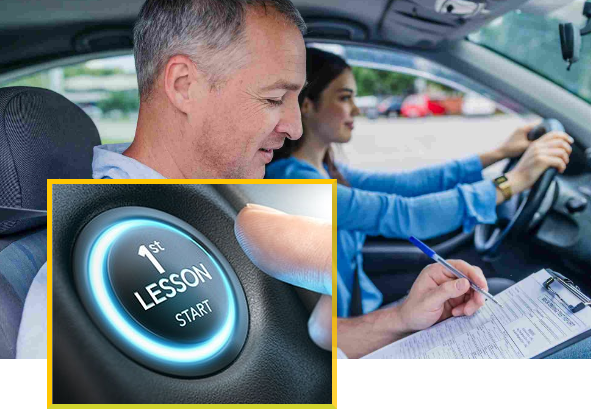The Entry-Level Driver Training (ELDT) regulations are applicable to those prospective drivers who want to:
- Obtain a Class A or Class B CDL for the first time
- Upgrade an existing Class B CDL to a Class A CDL
- Obtain a school bus (S), passenger (P), or hazardous materials (H) endorsement for the first time
The endorsements that the Entry-Level Driver Training mandate covers are the Passenger (P), School Bus (S), and Hazardous Materials (H) endorsements. These are 3 of the essential endorsements for any Class A CDL holding driver. Any prospective drivers who want to obtain these endorsements on their Commercial Driver's License must complete their ELDT curriculum. Then only they will become eligible to attempt the knowledge and skills test required to get either of these two endorsements.
To qualify for the ELDT Instructions, driver-trainees must score at least 80% in all modules of Theory Instructions. For Behind-The-Wheel Instructions, they must get a green light from instructors upon successful demonstration of skills and knowledge.
There is no minimum number of instruction hours required for theory training or behind-the-wheels training, but the training provider must cover all the topics in the curriculum and determine whether the driver-trainee has demonstrated proficient skills, respectively.
Let's discuss these endorsements.
Passenger Endorsements (P)
FMCSA recognizes bus travel as one of the safest modes of transportation for passengers, but this requires constant attention and following of safety protocols. Passenger Endorsement gives the applicant the legal right to operate a commercial motor vehicle that can carry more than 16 passengers along with the driver. The CMVs that the endorsement holder can drive are taxis, service buses, limousines, airport shuttle vehicles, etc.
When the driver-trainee takes the skills test for Passenger endorsement, the test must take place in a vehicle similar to the one that the applicant will be operating professionally.
Theory Instructions for Passenger Endorsement
The Theory Instructions involve post-crash and emergency procedures, such as obtaining emergency medical assistance, engaging flashers, reflective triangles, and other warning devices for stopped vehicles, managing security breaches, on-board fires, emergency exit and passenger evacuation training, etc.; understanding vehicle orientation and pre-trip, en-route and post-trip inspection, briefing driver-trainees on passenger safety awareness and passenger management, and many other FMCSA regulations.
Behind-The-Wheel Instructions for Passenger Endorsement
The BTW Instructions require the driver-trainees to demonstrate their knowledge of vehicle orientation and pre-trip, en-route, and post-trip inspection, passenger safety awareness, and passenger management, as well as proper procedures for safely navigating railroad-highway grade crossings in a passenger-carrying CMV and baggage and/or cargo management.
School Bus Endorsement (S)
The School Bus endorsement is given on the basis of the characteristics of the school bus, which are:
- A seating capacity of 16 or more adults including the driver
- Gross Vehicle Weight Rating (GVWR) of more than 26,000 pounds
The Code of Federal Regulations defines a school bus as a CMV used to transport pre-primary, primary, or secondary school students from home to school, from school to home, or to and from school-sponsored events. School bus does not include operations of a for-hire motor carrier.
Training similar to that of Passenger endorsement is needed for the School Bus endorsement skills test, and one may not apply for the latter unless they already have the P endorsement. A driver-trainee can apply for both endorsements together as well.
Theory Instructions for School Bus Endorsement
The Theory Instructions involve teaching the driver-trainees about danger zones that exist around the school bus and the techniques to ensure the safety of those around the bus; correct mirror adjustment and usage; the laws and regulations for loading and unloading; the basic vehicle orientation of school buses; the proper procedures following a school bus crash; safely evacuating the bus in an emergency and planning for an emergency in advance, etc.
Behind-The-Wheel Instructions for School Bus Endorsement
The BTW Instructions consist of exercises related to basic vehicle control skills and mastery of basic maneuvers, whereby driver-trainees must demonstrate their knowledge and abilities regarding danger zones and use of mirrors, loading and unloading techniques learned in the theory portion, their role in safely evacuating the bus in an emergency, special safety considerations, etc.
Hazmat (Hazardous Materials) Endorsements (H)
The Hazmat Endorsement allows a CMV driver to carry hazardous materials (as defined in the Code of Federal Regulations) in interstate commerce. The knowledge test for this consists of 30 questions and is available in the English language only. Upon successful completion of this test, driver-trainees must apply for a Federal Security Threat Assessment. The approval to issue a Hazmat Endorsement comes from the U.S. Department of Homeland Security, Transportation Security Administration (TSA).
The recertification process for Hazmat Endorsement requires the commercial drivers to provide their Endorsement prior to license renewal or upon the transfer of a State CDL. The recertification notice is mailed to the applicant 7 months prior to the renewal. An additional fee must be paid any time a HAZMAT endorsement is issued or renewed.
Unlike Passenger and School Bus Endorsements, Hazmat Endorsement does not have any BTW training or skills test. Only a knowledge test of 30 questions must be passed.
Theory Instructions for Hazmat Endorsement
The Theory Instructions involve teaching the driver-trainees the basic HM competencies, including applicable FMCSR requirements when HM is being transported; the proper procedures and contacts for the immediate notification related to certain HM incidents; the proper loading and unloading procedures for hazardous material cargo; special precautions for fires, loading and unloading, operation of cargo tank motor vehicle equipment, and shut-off/shut-down equipment, etc.
Contact Us
Lets Talk
(307) 300-0017
